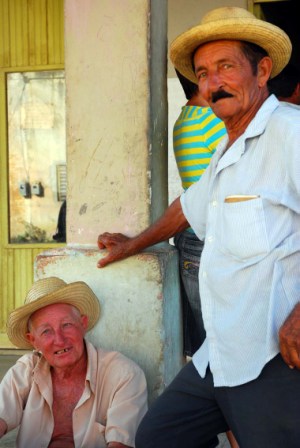Shorts in the Energy Revolution
Fernando Ravsberg

HAVANA TIMES, Oct. 15 — Some 20 percent of the electricity usage of the 2.5 million Cuban families takes place while they’re cooking, according to the official press, which is calling on citizens to look for ways to avoid excessive energy consumption.
Among the initiatives implemented at the national level is the production of ceramic burners to increase the efficiency of electric stoves —supposedly already energy efficient— that the government bought by the millions and distributed among the population.
The problem of the over-consumption of energy has appeared evident ever since it was announced that all families that cooked with gas, kerosene or firewood —most of the population— would have to start using solely electric appliances.
I remember they even tried to organize citizens to cook at different times, in staggered shifts, but this didn’t work. Apparently homemakers lacked the discipline that such a task required.
However, this wasn’t the only miscalculation. They also sent thousands of workers house-to-house across the entire country changing the rubber gaskets on refrigerator doors, only to trash all of those old appliances a couple of months later and replace them with brand new units.
They made the decision to import millions of these appliances and distribute one to every Cuban home on the island. These included pressure cookers, rice cookers, electric cookers, refrigerators, air conditioning units, stoves and even thermo-like devises for heating water electrically.
People put up new shelves in their kitchens to display all these appliances, jokingly calling these their “patriotic corners.” However, the appliances wore out or broke down so quickly that there’s now plenty of space on those shelves.
The thermoses were the first ones to break, and now there are hardly any that work. The electric stoves were next; these had to be replaced. What’s more, the new Chinese refrigerators are now called “big crybabies” because they constantly drip.
The quality of the appliances purchased en masse is more than doubtful, with the added difficulty being that spare parts for them are in short supply. That’s why when these break, there’s no other alternative than to find some homespun solution.
But no spare parts
Fidel Rodriguez, the administrator of a repair shop (pretentiously called “The Electronic Laboratory”), told the Granma newspaper that he has 164 clients waiting on spare parts to repair their “multipurpose cookers.”
In these “laboratories” more than 20 parts have been invented to repair pressure cookers, rice cookers and hot plates since these are indispensable for cooking now that the selling of gas and kerosene to the public has been discontinued.
The general population is now paying for all this. Recently in a meeting with the municipal authorities of the Havana community of Arroyo Naranjo, a woman told them: “I’ll return all those pots and I’ll even pay if you just give me back my gas cooking tank.”
The problem is that now she and many other citizens are forced to buy kerosene and gas on the black market. A gas tank refill alone costs $5 USD, which is a hefty sum for many Cuban families.
People hope those problems are resolved instead of continuing to read complaints in the official newspaper that: “People still owe 598 million pesos on the appliances sold to them.”
What did they expect? You don’t have to be a fortune-teller to predict the response of a person demanding payment for some poor quality appliance they were forced to buy and that doesn’t have spare parts.
And if all this weren’t enough, the container-sized electric generators purchased and installed across the island just a few years ago have now begun to break down one after another. It appears there’s no other option than to return to spending for repairs on the old regional thermoelectric plants, with an initial investment estimated at around $300 million (USD).
Without a doubt it’s a complex problem, and it will be difficult to straighten it out by massively producing “ceramic burners to multiply the heat capacity of electric stoves,” as the Cuban press announces with such optimism.






Just because a bureaucracy ‘goes thru the motions’ with what is basically a sound idea, doesn’t mean that the plan itself was bad in essence: just that it wasn’t sufficiently thought-thru or planned, or followed-thru, or there was a lack of proper feedback/oversight, etc., etc. Not to mention the very structure of the stalinist system Cuba still suffers under for the most part. Unfortunately, a desperately poor and assaulted country like Cuba can’t afford too many of these ‘sub-optimal’ outcomes…
For one thing: the “socialist” chinese firms shouldn’t be producing — and then dumping — such inferior products on anyone — let alone ‘fellow socialist’ countries. And then the cuban bureaucracy shouldn’t have been buying a ‘pig in a poke’, seemingly _every_ time it does not consult the populace democratically, and instead instructs them to simply conform to the new practice — which suddenly turns out to be infuriatingly sub-par.
The citizens of ‘socialist’ Cuba really need to take the power into their hands to stop these (corrupt) practices costing themselves and the country billions in lost resources — and then some.
Very good article. Just to think about what ceramic does. It stores energy, it doesn´t not increase it. The whole ceramic stuff is one big low cost failure from a party member in Camagüey. There are certain professionals in Santiago knowing it much better what do to with the Chinese cookers. But it is also an example why it is so hard for poor countries to evolve, they can only afford bad quality products from chinese production which is not meant for the rich countries. It´s incredible how many failures those products have. A whole bunch of Orange imprimadoras was a failure due to a too small motor inside. What sense does this make? So please let more Cubans study abroad, collecting knowledge as in the good Soviet times and put those people in power.